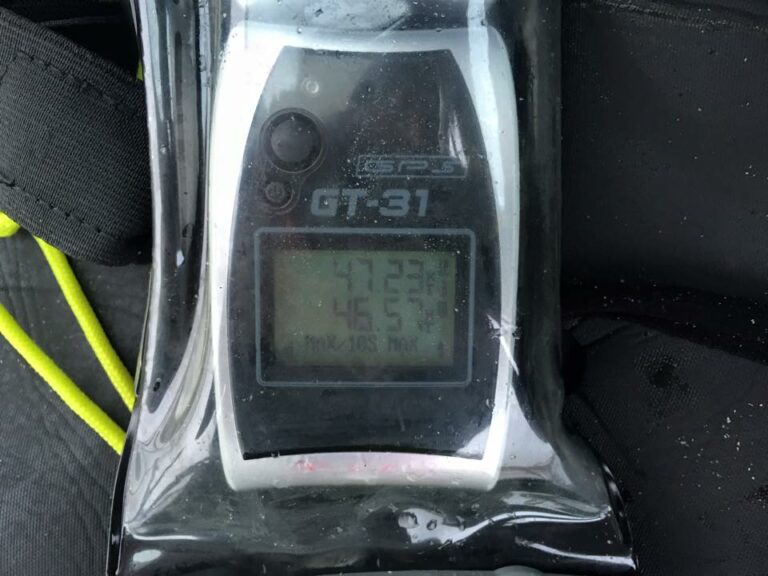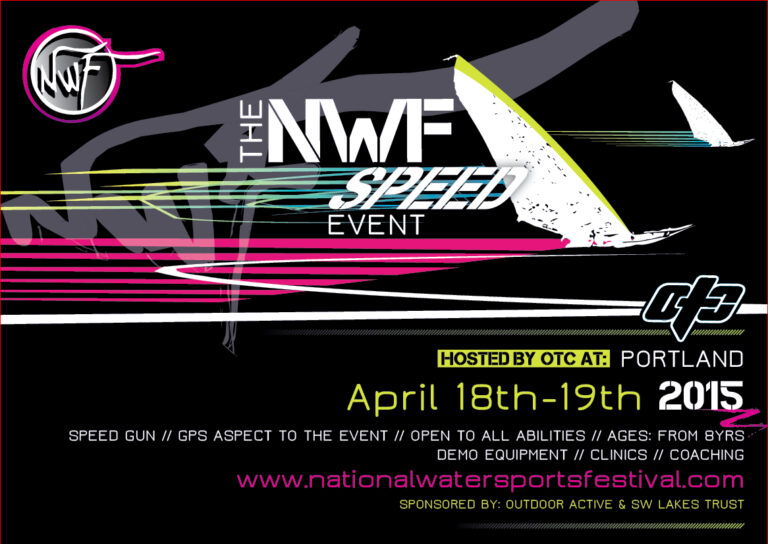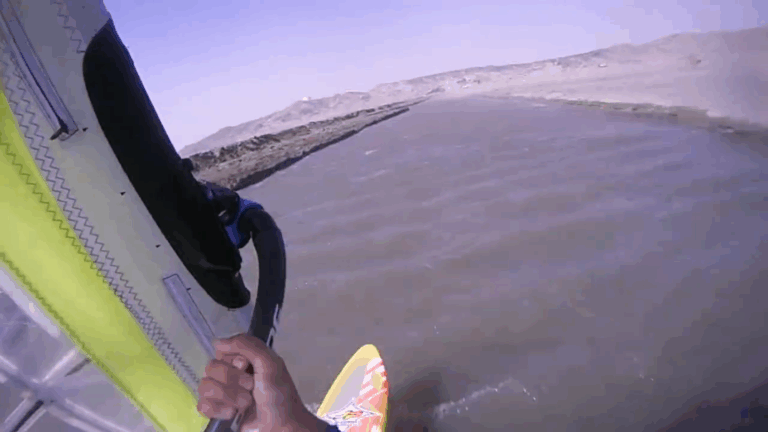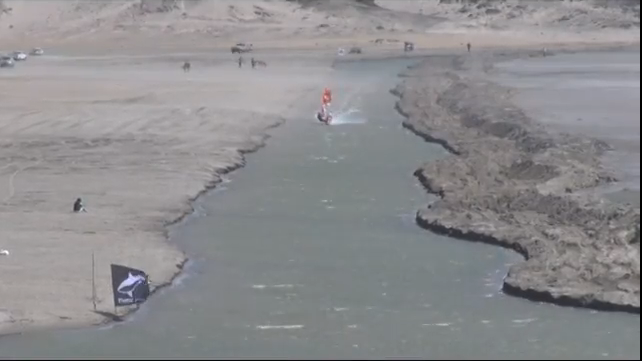We’re still thinking all about speed here on Boards and this week we start by catching up with Tris Best and the Portland Pirates, to find out why GPS windsurfing could open up a whole new love for a different side of the sport.
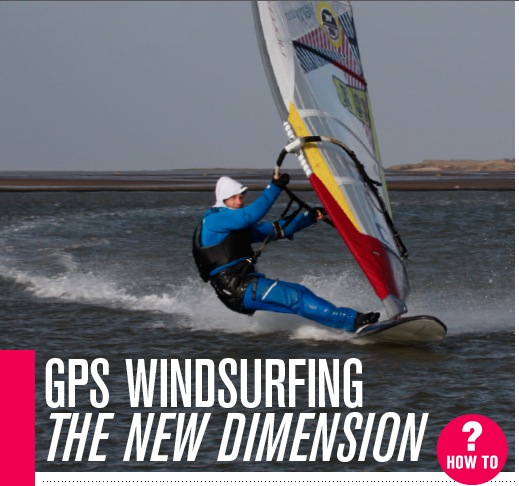
“Why do I windsurf?” Is it a question that you ever find yourself asking? Perhaps you do during the long swim to your kit after that ill-timed top turn; or maybe the question springs to mind as you are reduced to the foetal position, the blood pulsing back to your hands after a freezing winter session.
But what if you are asking yourself this question more and more regularly? What then – give up?
The truth is most of us windsurf because we thrive on the challenge it poses. Few would disagree that from the outset of their windsurfing career, the sport has an uncanny knack of frustrating … yet that crimson-facing, blue-air-inducing frustration is instantly extinguished with an overwhelming sense of achievement once that new core skill or latest manoeuvre is learnt.
Windsurfing is a drug and at the height of addiction the question is easy to answer. Words such as freedom … escapism … adrenaline-rush … social scene would be commonplace in anyone’s answer. An intermediate who is progressing into planing conditions and is learning to control the board as it dances under their feet would probably sing you their answer with such enthusiasm that it would be hard to understand! Is this because they are getting their first taste of the drug? Perhaps. But I would suggest another answer as well. It is because the intermediate is being challenged each day they go on the water … and learning something new.
So what if you’re progression has plateaued? Easy – challenge yourself in another way. Go on a Pro Coach clinic and get your progression kick started again. Try a new location – hunt for a new wave or try to increase your PB at a new speed spot. Maybe even go as far as trying another discipline … it is, after all, one of the most diverse sports ever. The trouble is, the more experienced you become, the more niche the conditions you crave after to get your fix. Wave sailing is a perfect example – if it wasn’t enough to limit your windsurfing to 5.3m conditions and windier, you also now scour the forecast for the hint of a ground swell. From going out every day it was windy when you were an intermediate, you are now restricted to the desperate hope that the forecast coincides with your day off; that you get the green light from the other half and have enough money to finance your run to the coast … and that the wind doesn’t die when you get there. For all these elements to come together often takes a small miracle. No wonder many look to other sports a source to satisfy their craving.
Well, now there is something new in the sport – a kind of sub-culture that has rekindled the challenge for many, yet to most needs defining as it is easily mistaken as an extension of speed-sailing. This is GPS windsurfing.
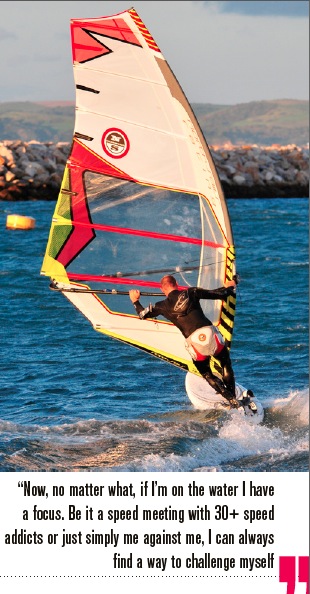 What is GPS Windsurfing?
What is GPS Windsurfing?
The biggest point to drive home is that GPS windsurfing is not just about going fast in a straight-line. It is actually so much more – it provides purpose to every session you have on the water and can be the catalyst to helping your windsurfing standard improving again. It is about your whole performance – the perfection of your gybes, the way you tune your kit, your response in gusts and lulls, and your endurance. You find yourself comparing each session to your last … and to windsurfers on the other side of the world! The best way to describe GPS windsurfing is that it’s as close to competing in a triathlon as the sport gets: whilst the cream at the top challenge for the honours, most thrive on the challenge of bettering their last performance. There are six parameters used to gauge this:
• 2sec Peak. Simple. As it says, your peak speed as shown on the software. Note, your GPS unit is normally set to 1sec peak, so when you download your data, the result might alter slightly.
• 5 x 10sec Average. This is your five best 10second runs of your session; you only get one 10second per run.
• 1 hour. Average speed over 1 hour. Sailing for an hour non-stop is a lot harder than we all think. Try it!
• Alpha Racing 500m. Speed over 500m including a gybe the snag is you have to return within 50m of where you set off.
• Nautical Mile. Sailing at full speed for a mile.
• Distance travelled in a session. Pure endurance you’ll be amazed at how far you travel during your day’s sailing.
Why Do It?
The simple truth is that investing in a GPS system gives a new lease of life to your everyday windsurfing. It provides purpose to every session and a new focus, without requiring you to drastically alter the style of windsurfing you’re already doing. A new challenge is set! This is what BSA Pro Fleet regular Jim Crossley (K33) had to say:
“The GPS has given me rekindled enthusiasm for my flat-water windsurfing! For me, it’s not all about going to West Kirby or Southend and sailing over 40knots. I look at the data for every session even if it’s a summer’s day cruise with a 9.0m. There is always something to learn about you equipment or technique and tuning to be done; always looking for a PB speed for a board or spot … alphas, hours or distance. For those with a competitive nature you can compare speeds with friends from your home beach or from the other side of the world on the same kit as you. After 30years windsurfing my sailing is improving at its fastest rate ever.
Take care because it’s very addictive. You could end up like me!”
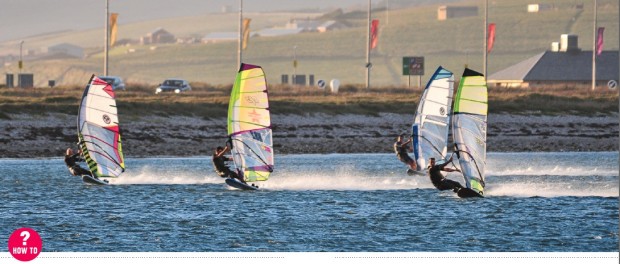 GPS Team Challenge
GPS Team Challenge
Taking the concept one step further, an Australian decided to set up a Team Challenge website, where you can set up a team with some mates at your local spot and compare your group’s results against that of teams around the world, adding yet another dimension to the GPS culture. Mark Matthews – Captain of the GPS Team, the Portland Pirates, explains:
“Team Challenge is an amazing concept for windsurfing. If you are just sailing for fun or blasting along with mates, what better way to enjoy yourself than entering the GPS Team Challenge? In 2009 it came to my attention that two Aussies (Hardy and Nebbian) had invented a concept for windsurfing with a difference. Basically you had the same as the evaluated rankings on GPS Speedsurfing (2second max, 10 second average, 1 hour, Alpha 500, nautical mile and distance) but you have to make them with a friend / teammate on the same day to get it ranked for the month. After this you then strive to improve on each discipline.
“So The Portland Pirates were founded in The Ferry Bridge pub with myself Pete Young, Steve Corps and Norman Petty ready for the 2010 season. In the first year we gave it a go and ended up in the top ten, out of about 40-odd teams from all over the world! The best thing about the Team Challenge concept is you don’t need to be the fastest to help out on any given day. The disciplines of 1 hour and distance can be a great point winner for the month; all you need is two willing people to slog it out. It will also really improve your windsurfing in general and give you fitness beyond belief. The funny thing with the hour is that the first 20 minutes are painful; the middle 20 you relax and the last 20 … well, you count the seconds! (Best to have a watch as well as a GPS!)
“Last year we grew a little as a team and ended up fourth internationally for the second year running. The concept has grown all over the world now, with teams from Australia, Belgium, Croatia, Germany, Great Britain, Holland, Italy, Ireland, Japan, New Zealand and Sweden. There were 64 active teams for 2013 and I hope it continues to grow. It would be great for more teams from the UK to compete against each other … and against the world! It’s the same as GPS Speedsurfing – you make your own ladder watch the people below and chase the ones above, except in this concept you need a friend to sail with and that makes it more fun!”
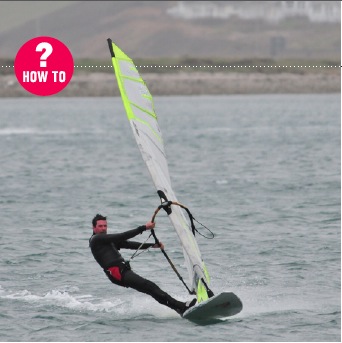 How do I get involved?
How do I get involved?
The first step would be to buy yourself a GT-31 – the GPS system used by most – kind of the industry standard. These can be purchased from most windsurfing retailers – for information on your closest stockist, get in touch with the UK importer GPS-Speed.co.uk
Next, you need to download some software from either www.gpsactionreplay.com or www. gps-speed.com. These are the local programmes on your computer that grab the data from the chip of the GPS system and display it in a format that you can analyse and understand. The software packages have a trial period when you initially download them, after which you pay a nominal fee to possess it indefinitely. There is a third programme from www.ka72.com which is a FREE download, but this package doesn’t have half the functionality of the other two, limiting the detail of your analysis.
Once you’ve downloaded your data you can share it with others and compare your performance on a given day to that of others around the world! The first website is www.gps-speedsurfing.com (free to register). This is the mainstay of the GPS speed-sailing fraternity. But remember it is NOT all about speed! You can check out your gybing prowess and compare your endurance to others as well. This leads neatly onto the Team Challenge website gpsteamchallenge.com.au which is also free. By getting involved in GPSTC you will be astonished at how much it spurs you on to go out when the temperature falls well short of 10 degrees, or the conditions just don’t seem that favourable. The last thing you want to do is let the team down!
We will leave the last word to GPS legend Ian Richards: “The GPS will add a totally new dimension to your sailing no matter what your level; the main thing is it’s a great motivator to push yourself a little bit harder every time you go out. Whether it’s V-max speeds, 500m, gybing skills, distance or one hour that the prevailing conditions are good for, GPS allows you to do it. It’s not expensive and it’s easy to post sessions online on the superb GPS Speedsurfing site, or join a team and post on GPSTC. But yes, be warned, it’s addictive!”

